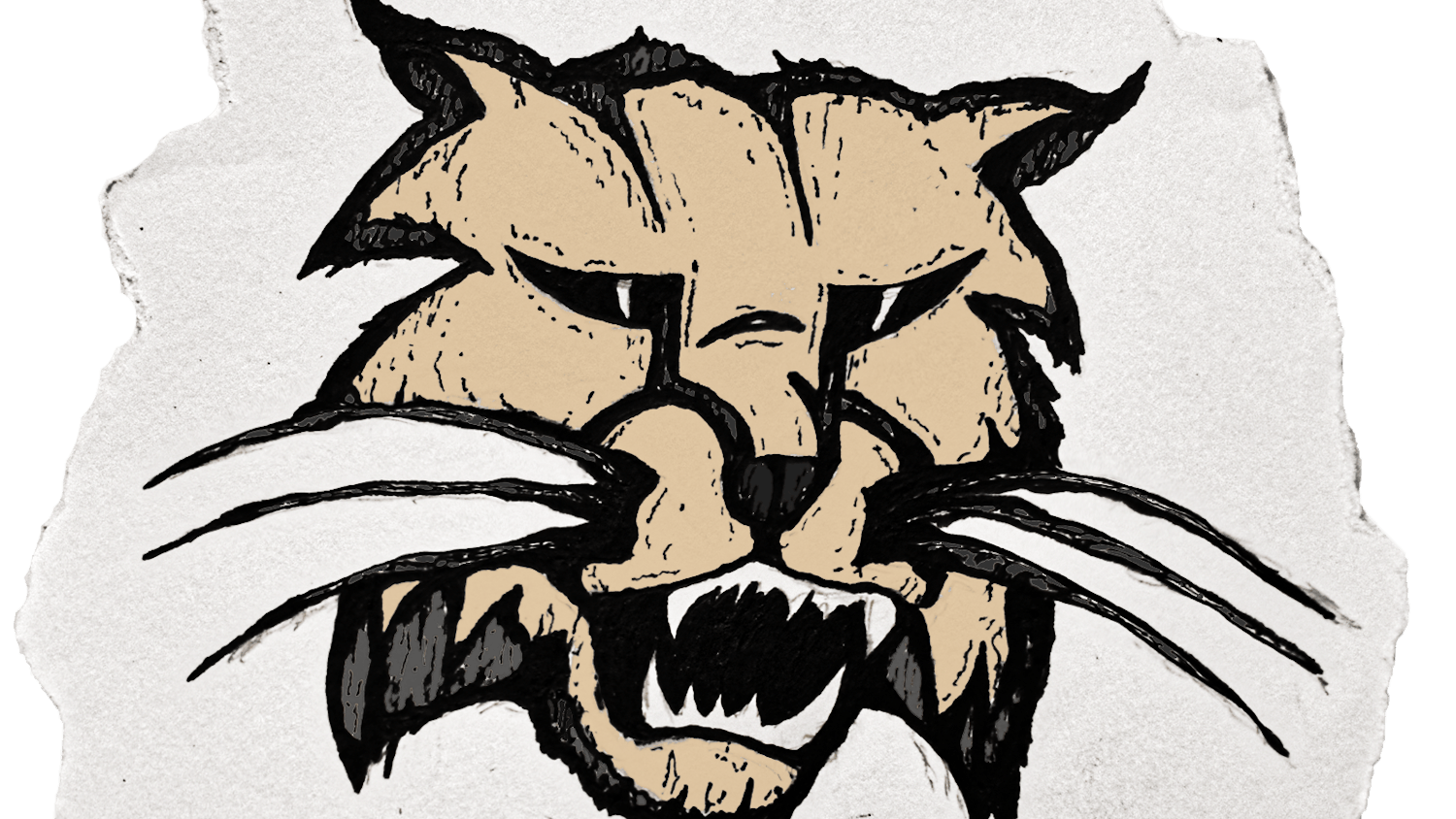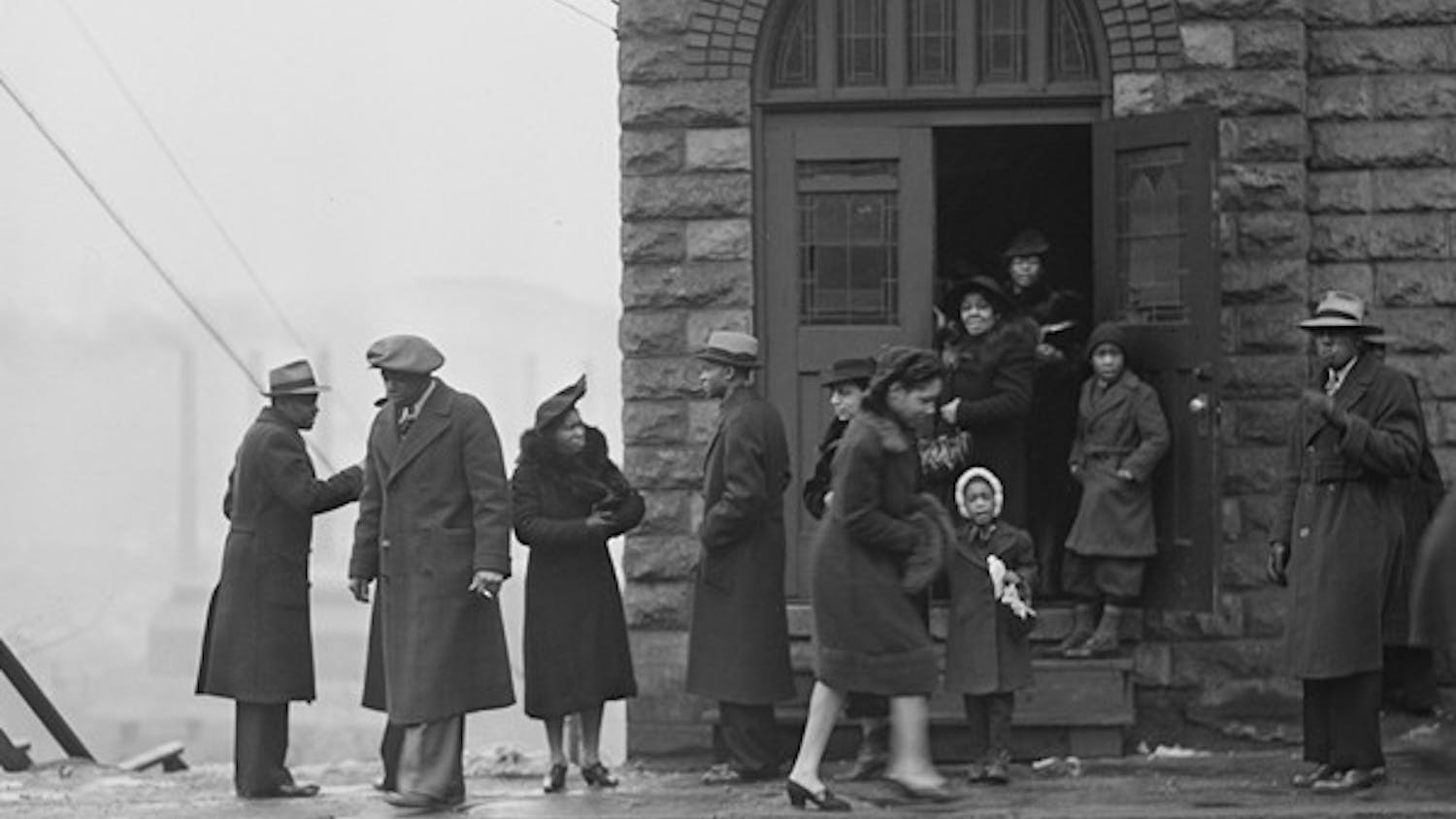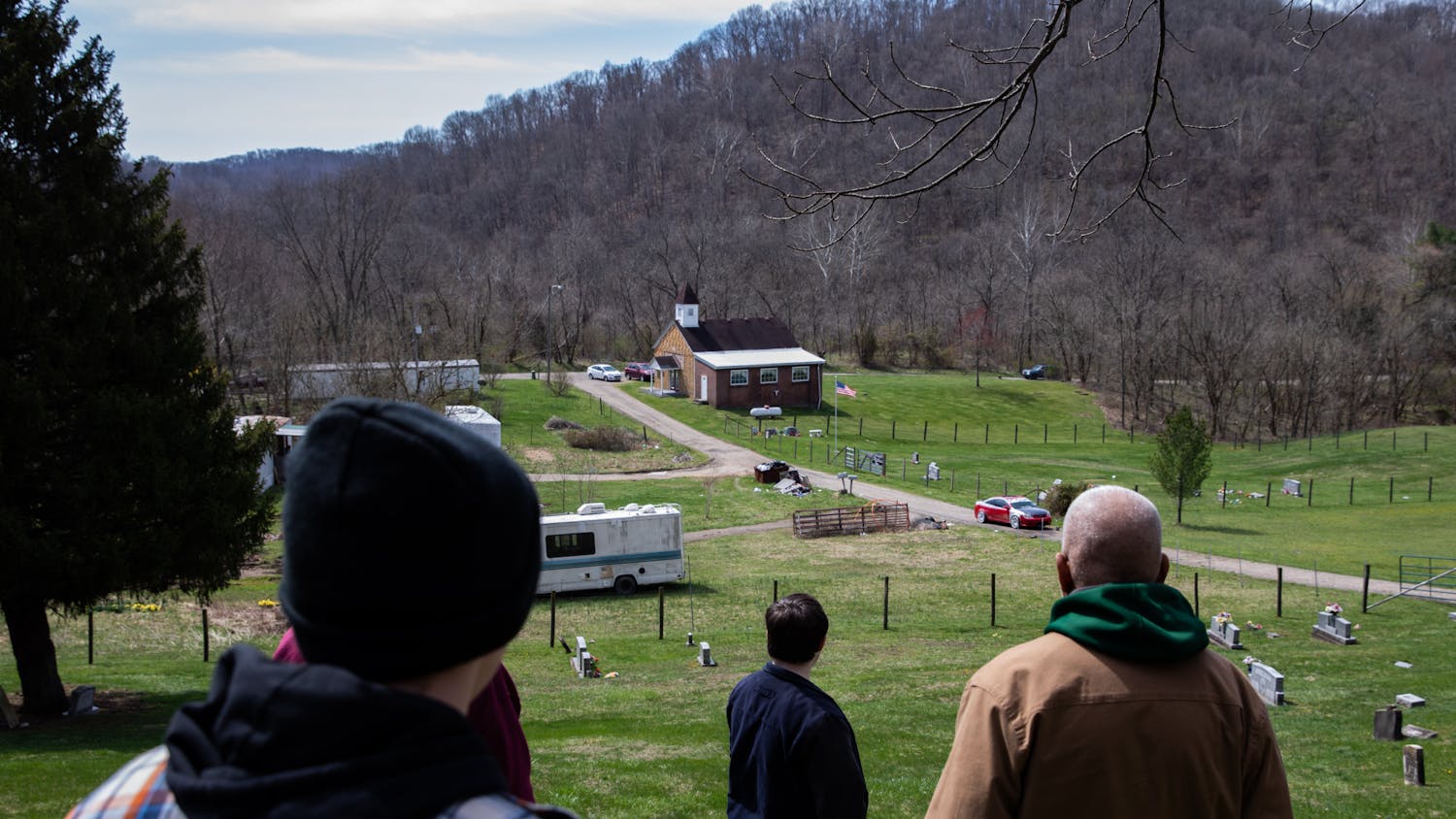It’s Oct. 20, 2019, and Ohio’s oldest Black church is celebrating its 200th birthday. The joyous celebration is tucked into the Appalachian woods, and the white wooden building is full of party goers, many of who's families have been well accustomed to the green-roofed building for generations.
Union Baptist Church, now located in Wayne National Forest in Blackfork, Ohio, is a physical reminder of Southeast Ohio’s long standing Black history. From Sept. 27 to Oct. 22, Ohio University students have the opportunity to glimpse into this celebration with Black in Appalachia’s “A Liberated Landscape: Photographs of Black Appalachian Ohio.”
The exhibit, located in the Trisolini Art Gallery in Baker Center, features the work of two photographers who captured moments of modern celebration in historically Black communities of Southeast Ohio. The collection was produced by Black in Appalachia, an organization that documents Black historic narratives from the Appalachian region and seeks to share the rich Black history of Appalachia.
“It is important to see different representations of our environment in a central part of the university,” Madeline Hammons, a senior studying costume design and a gallery monitor for Trisolini Art Gallery, said.
While the gallery has been in place for a few weeks already, Thursday hosted a lecture at 5 p.m. followed by a reception for the gallery from 6 to 8 p.m.
“(I) talk about lessons learned and some things that I've discovered along the way,” William Isom II, director of Black in Appalachia and a photographer in the exhibit, said.
In terms of the reception, Isom joked he and attendees would just drink, hang out and eat cheese. This lighthearted take on the event is not out of character for Isom, who likes to remove himself from the narrative. He said he and his fellow featured photographer, Jessica Tezak, feel honored to help share these stories, but make no claim on them.
“Even these photographs that are in that gallery don't belong to me or Jessica, these images belong to those community members,” Isom said. “They're not ours. We're just displaying them to exhibit that these communities are alive and thriving, and they're there. They've got this long, rich history, and this is what it looks like to celebrate Black lives. But these images aren’t our images, they don't belong to us. They belong to those communities that they were taken in.”
The idea for the project came from Isom’s work in Tennessee documenting Emancipation Day celebrations. In their research, the team at Black in Appalachia came across an old VHS cassette of a conference about Emancipation celebrations. From this, Isom discovered the oldest continually celebrated Emancipation Celebration in the nation, which takes place in Gallipolis, Ohio, each September after watching a documentary photographer, Daniel Williams, discuss the event.
“I saw him (Williams) give a lecture about the oldest continually celebrated Emancipation Day in North America was in this place called Gallipolis, Ohio,” Isom said. “And I was like, where the hell is Gallipolis? And so I look, and I see that it's in Appalachian Ohio. It's in southeastern Ohio.”
Isom decided to travel to Ohio for the Emancipation Celebration on Sept. 22, and he returned to photograph and document the event for several years, which took more than reporting.
“I had to build trust with people because apparently some students and other people, like faculty, had just kind of come in and extracted stuff out of the community,” Isom said. “Stories and old histories and these people didn't have access to those stuff that was taken. They get to parade this around, but it was extracted from this community.”
Finally, after several years of building these relationships, he was invited to document more in the community.
“One of the community members said, ‘Hey, we're having homecoming at our church, Union Baptist Church, which is the oldest continually functioning black church in the state of Ohio,’' Isom said. “And it was close by, so there's like all these, long standing Black historical traditions in that part of Ohio that people are still cultivating and doing today.”
Union Baptist Church emerged from a complex story that intertwines the underground railroad, Native American and Free Black families, early local industries and a rich history. Isom said many people he spoke with had fascinating family histories, including one man, Glenn Miller, whose family settled in Lambert Lands, a free Black settlement. All interviews Isom completed can be found on Black Appalachia’s website.
The Lambert Lands Settlement was in the middle of the woods, and was created by Frank Lambert and 29 other people, all 30 of whom were formerly enslaved. The group purchased over 260 acres of land and created a thriving Black community.
“The title of the show, I call it liberated landscapes,” Isom said. “Liberated landscape, because like these are spaces where people were able to carve out a basic life in a time and space where that was not possible in most of the country,”
Isom said it was important to remember these spaces had complex histories, as although these places were free Black communities, the people living there faced horrors such as paddy rollers, or border patrol agents who would abduct Black people and bring them to the South. Isom said the Klan was also very active in the region, and Black folks who settled in the area still could not vote or own a gun.
“No part of our history is cut and dry,” Isom said. “It’s all always so very complicated and contradictory.”
The 200th anniversary celebration is when Jessica Tezak, the other photographer for the exhibit, joined the project. Tezak said her expectations were based on her experiences in Illinois, with passionate people in largely segregated church communities. Tezak said the opportunity to join the Union Baptist Church for their celebration was something she was incredibly grateful for.
“While I only saw a small window of what life is like in these two southern Ohio towns,
The contrast between what I am familiar with and used to in my own religious community experiences and the community they’ve built over the course of two centuries shocked me and woke me up in a positive way,” Tezak said in an email. “It was beautiful and something I will always remember. Thank you to the Union Baptist Church for welcoming a perfect stranger into their home and allowing me to witness and document something new.”
This gratitude continued into how Tezak and Isom developed the collection, and Isom said multiple people from the community have thumb drives with every interview, video and photograph the pair took. Isom said he appreciated the trust he was shown in receiving that information, and said he made sure anything he received was given back to the community that owns it. He said he hopes visitors to the exhibit pay similar respects to their own local communities.
“(I hope) it compels people, particularly students, to look around where they're from and where they're at to see what's there,” Isom said. “I hope that it compels people to maybe go visit a little church, it doesn't have to be a Black church, but go visit like a little church and make friends with the old ladies. I hope that people get curious about their own communities, where they're from, and start to look around.”
Editor-in-Chief






